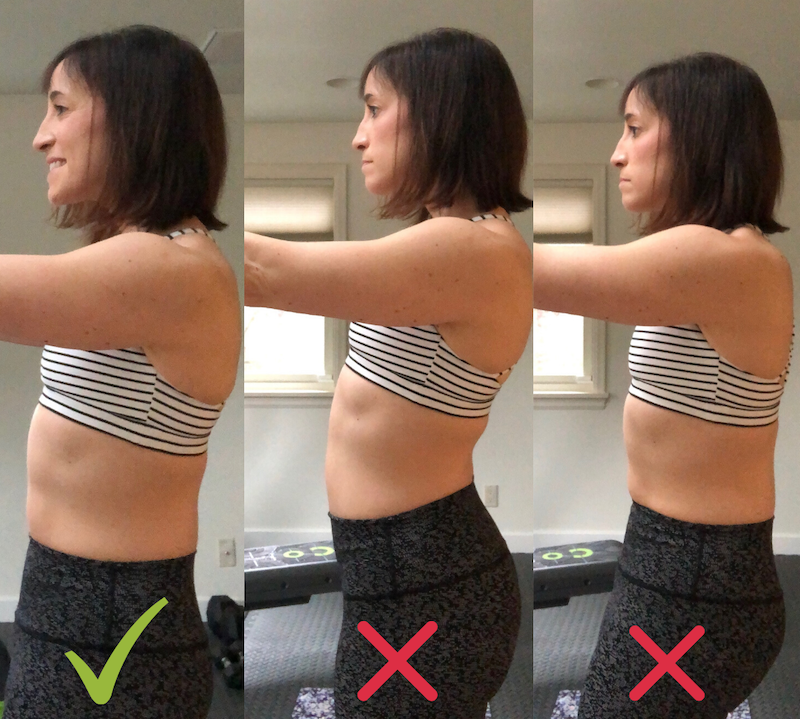How to Find Your Neutral Spine
“Find your neutral spine” is a cue I’ve heard hundreds of times in group fitness classes (and I've used it myself!). In class I would take a peek at myself in the mirror, but I wasn’t entirely sure what I was looking for. Turns out - I'm not the only one. So, let’s talk a little bit about what a neutral spine is, why it’s so important (especially during a workout or lifting load), and how to find it. Then next time you hear the cue, you'll be fully prepared :)
What is a Neutral Spine?
Neutral spine is your aligned (or optimal) position that allows your body to properly recruit your core muscles (diaphragm, pelvic floor, transverse abdominis, and multifidus). From a postural standpoint, think of alignment as how your body’s joints and bones stack up to create your posture. Although it varies from person-to-person, there is generally a mild curve in your lower back. Many people find themselves in one of two positions:
Anterior Pelvic Tilt - Exaggerated low back arch and booty out like you’re about to rock the dance floor. You might also be in a “rib thrust” position, in which the bottom of the rib cage is positioned upward.
Posterior pelvic tilt - butt tucked under and shoulders hunched
It's ok not to be “perfect.” The “just right” alignment is tricky to find and there isn’t a ‘one-size-fits-all” posture. But, being in optimal alignment (or what is considered optimal in our body) gets the diaphragm stacked over the pelvic floor muscles and allows for the core to work its best. This is key for avoiding injury and discomfort - for anyone.
Why is it important to find a Neutral Spine?
A neutral spine is the body’s optimal position to handle stress, movement, and heavy loads, like carrying a heavy toddler. In this position your spine is protected and your diaphragm, core, and pelvic floor are most available. When we are in “neutral” we experience optimal breathing, circulation, and muscles firing when they should.
Breathing - when your diaphragm is aligned, you have more access to take a full breath
Injury prevention - The core is meant to protect and stabilize your spine, important for preventing injury anywhere in the body.
Pelvic Floor dysfunction - The muscles of your core work together to stabilize the body. Dysfunction may appear in the form of leaking, diastasis recti, pelvic organ prolapse, low back pain, hip pain, and more. These conditions are often made worse by poor posture.
Why is this so important for Pregnant and Postpartum women?
Pregnancy takes a toll on our posture and core system. Learning how to find your body’s “neutral” will help the system start “talking.” You may notice you’re better able to take a full diaphragmatic breath. Getting the body aligned and re(learning) how to breathe is step one in a postpartum rehab program. Getting things “back in line” will also help with diastasis recti and pelvic floor dysfunction as well. How to get into a neutral spine position and proper alignment. I like this description from Girls Gone Strong:
Stand with your feet facing straight ahead and directly under your hip bones (not as wide as your pelvis).
Position your ribcage over the top of the hips.
Allow a slight arch in your lower back so that your bum is “untucked.” Your tailbone should not be tucked under your torso.
Focus on maintaining a tall thoracic spine,) thinking of growing up through the crown of the head. Allow a gentle forward rounding of the top section of the spine.
Check out this video for a fun trick too!
As always, feel good mama! Any questions on alignment, breathing strategies, or returning to fitness after baby? Contact me today - I'd love to help :)
xoxo,
Erica

